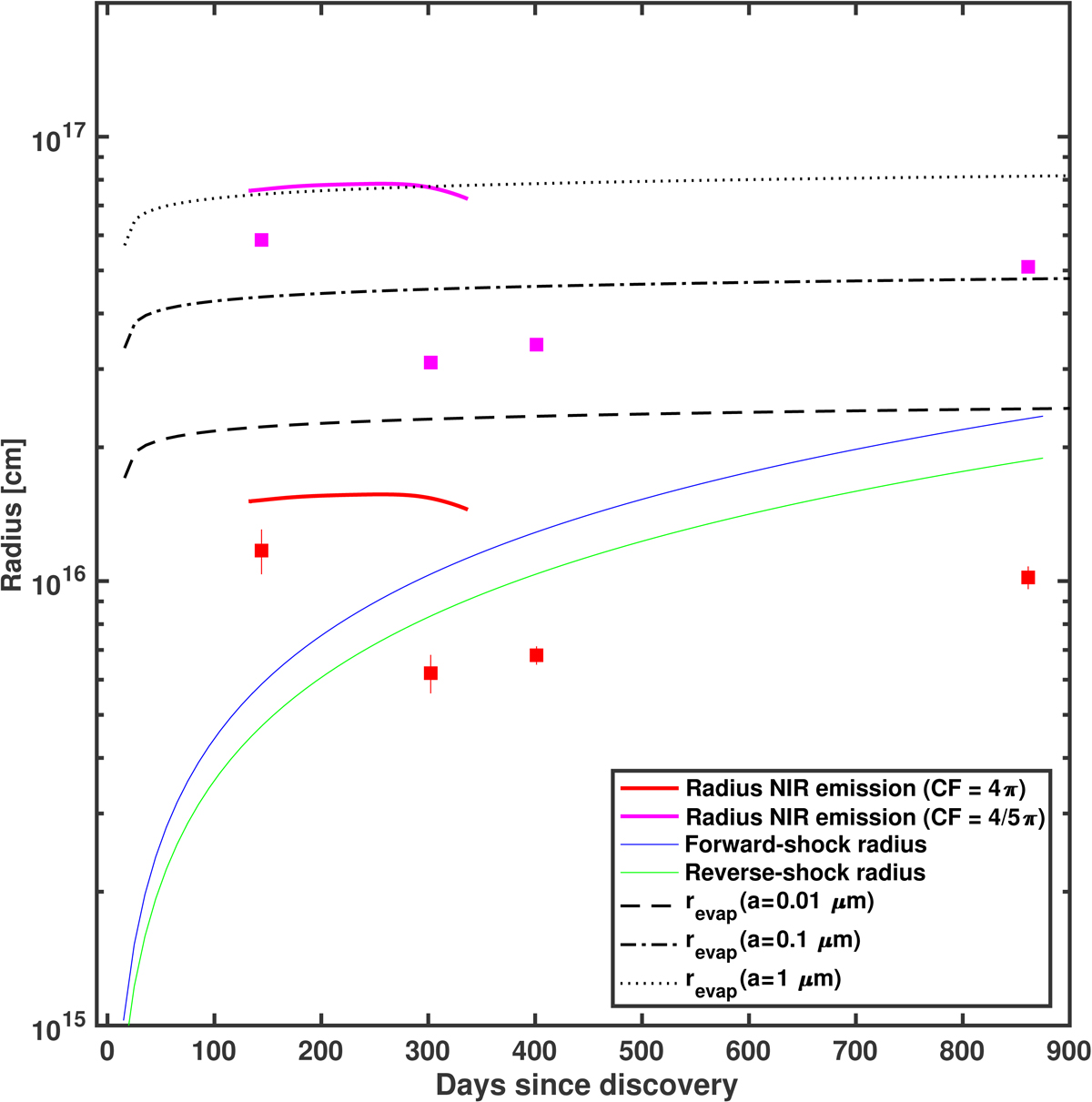Fig. 27.

Radius of the warm BB component (NIR emission) assuming it originated from dust distributed spherically with full covering factor (red) and with a smaller covering factor (4π/5, magenta). The lines are from the SEDs fit and the symbols are from the spectral fit with BBs. The radius of the forward shock as obtained from the spectral modeling of Hα (see Fig. 23) is shown in blue. The velocity of the reverse shock from which we derived its radius (shown in green) is taken to be 1000 km s−1 slower than that of the forward shock. The evaporation radius for the dust, which depends on the dust grain size (see legend), is shown in black. If the NIR emission is due to pre-existing dust, this must be distributed with a covering factor of ≲4π/5 otherwise the ejecta would have already reached and destroyed it around 300 days. Furthermore, the grain size of the dust must be <0.1 μm otherwise the large luminosity of the SN would have vaporized it (this is assuming a covering factor of 4π/5).
Current usage metrics show cumulative count of Article Views (full-text article views including HTML views, PDF and ePub downloads, according to the available data) and Abstracts Views on Vision4Press platform.
Data correspond to usage on the plateform after 2015. The current usage metrics is available 48-96 hours after online publication and is updated daily on week days.
Initial download of the metrics may take a while.


